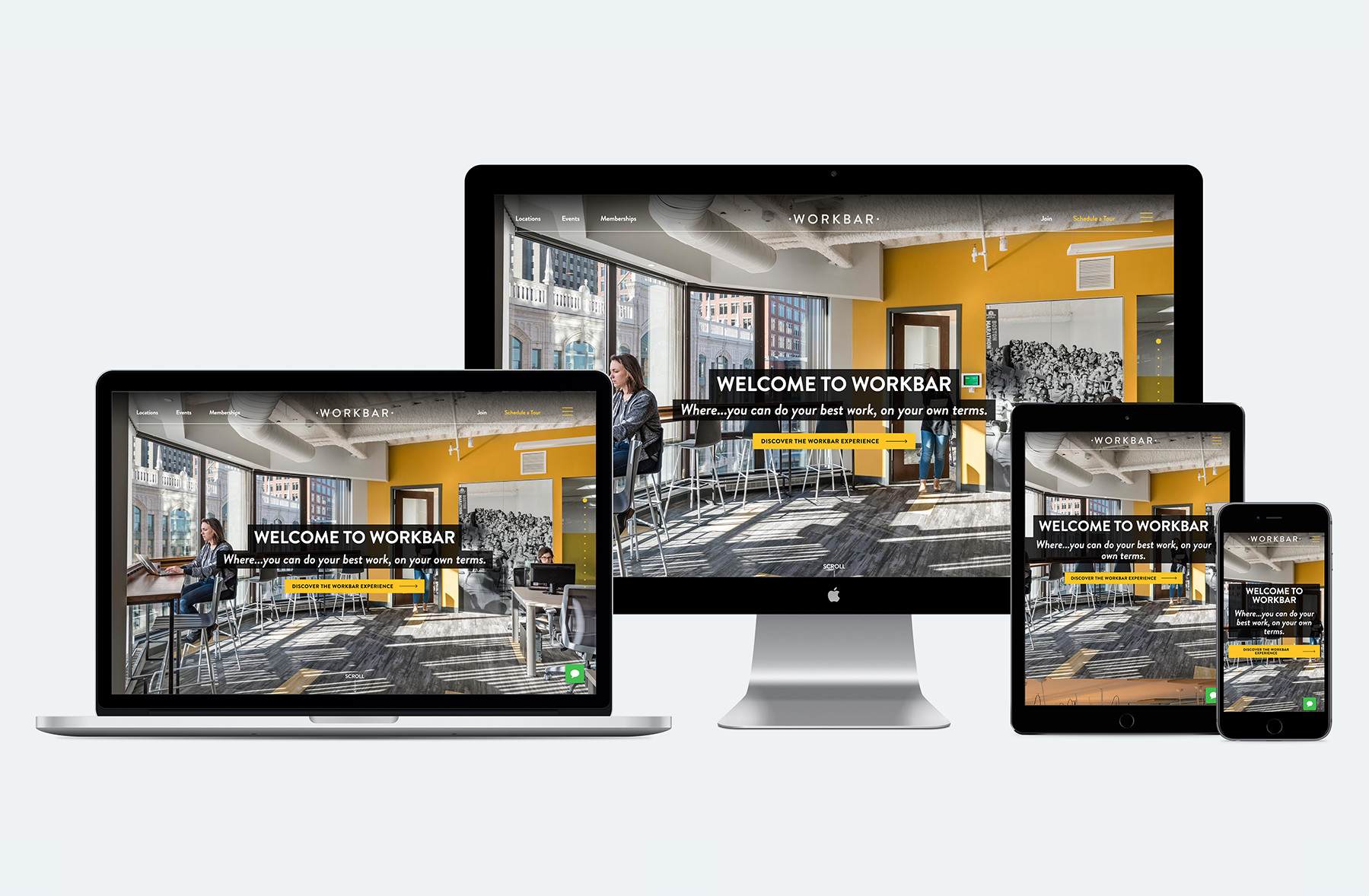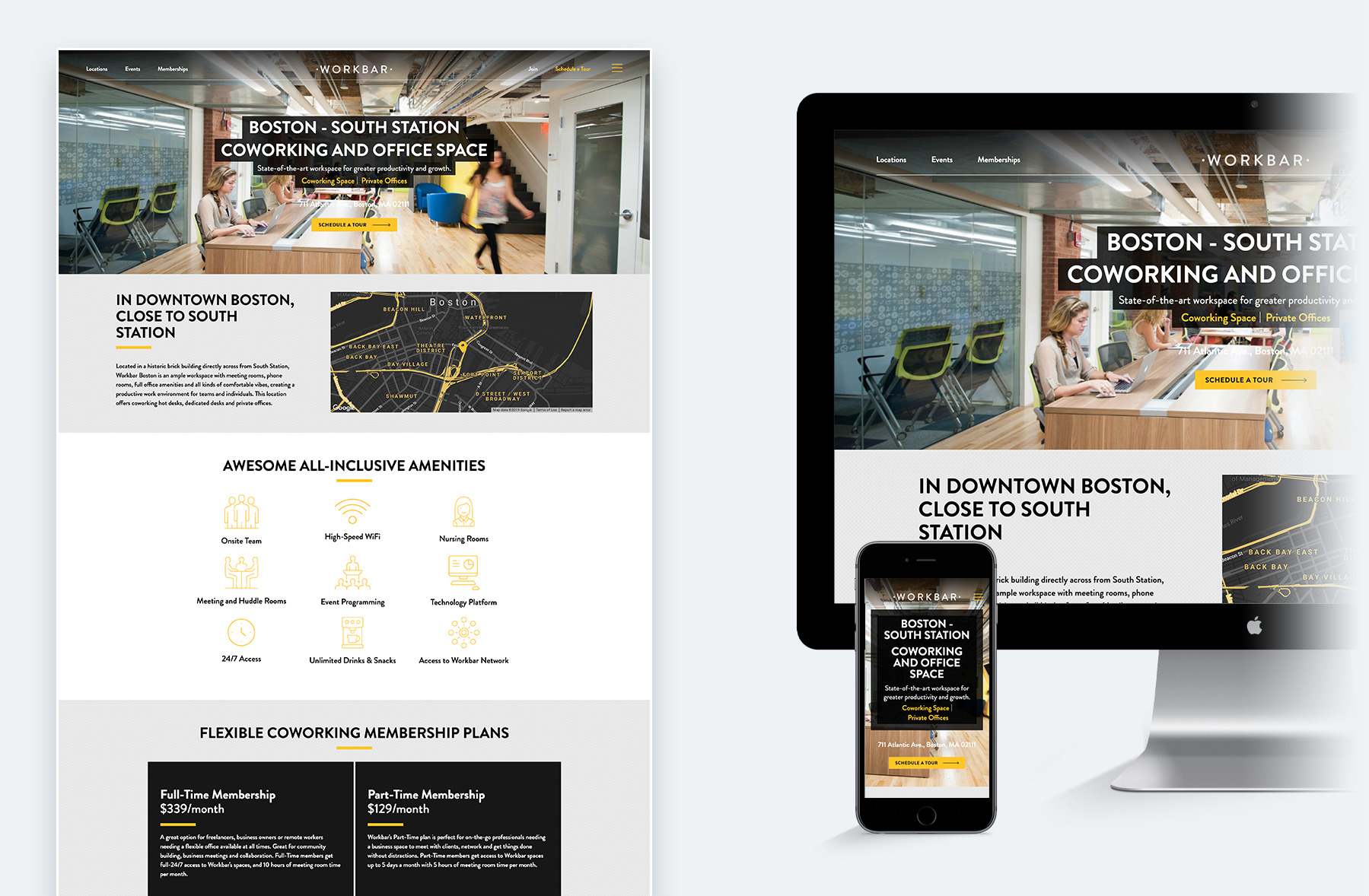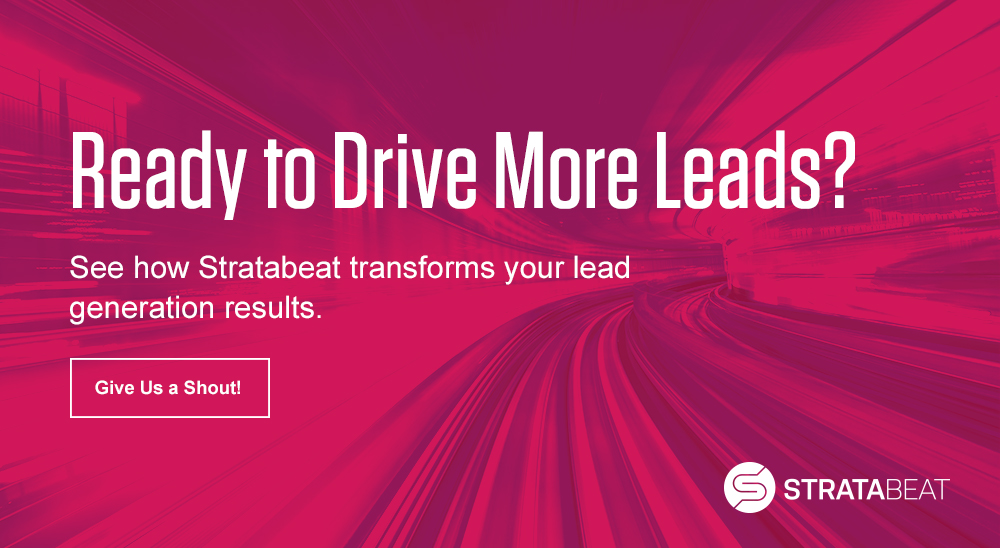The Surefire Strategy to Double Your B2B Leads

Let’s say you don’t really like your office space. It’s bland. Boring. Outdated. It smells like copy toner and TPS reports. You need something new and fresh. A transformation that will make your working space a place of beauty.
You do some Googling and come across the Officeworks website. The site is easy to navigate and shows off the beautiful spaces that have been created by the company. Their commitment to unparalleled service is clear, and their commitment to the community is equally as clear with more than 2,000 hours of community service over the past two years. It’s obvious that the company stands apart from its competitors.
Your interest is piqued, so you fill out a form to discuss an upcoming project you’re planning. In just a few minutes, you went from being an interested observer to a lead for Officeworks.
Why?
Because their site is specifically designed to attract you and then to compel you to fall in love with the brand. We worked hand-in-hand with Officeworks to create a new brand strategy, new logo, new brand aesthetic and a gorgeous new website. The result? Their revenue has tripled.
This example raises a critical question: how can you increase your B2B leads?
After all, leads are the lifeline of your business. Without new leads regularly coming in, your business will plateau.
What would it mean to your business to increase your leads? To double your leads? How much growth would that translate into? How much more could you achieve as a business? Doubling your leads is actually realistic when you execute in the right areas. To that end, here are six ingredients needed to create the killer cocktail to double your B2B leads.
Ingredient #1: A Killer Website
The first ingredient necessary for capturing more leads is a killer B2B website. Many businesses think that it’s enough to simply have a website. This couldn’t be further from the truth. Your website is your digital command central – the central, strategic asset in your B2B lead generation process. Your website should be the ultimate selling machine when it comes to your business:
- Does your site provide a highly valuable experience for visitors?
- Is your website visually stunning?
- Does your site evoke an emotional response from site visitors?
- Does it answer their questions and help solve their problems?
- Does the site help them achieve their goals?
- Is the website filled with trust-building elements?
Your website should anticipate the needs of your prospects and then fulfill key points along their journey. It should utilize the element of surprise to keep viewers interested and engaged. It should emphasize your differentiators and use hyper-targeted messaging and page-level targeting to meet your audience’s specific needs.
Your site must guide visitors, step-by-step through your funnel, from the point they first arrive to the point where they take action (fill out a form, click a CTA, etc.).
The Workbar website is a prime example of all these elements. The unique selling proposition is immediately clear. The navigation is simple and easy to follow. And each page leads the visitor further down the funnel, with multiple next steps or calls-to-action (CTAs) on every page in the site. Their website serves as a lead generating machine.
Ingredient #2: SEO
With your digital command center firmly in place and ready for business, it’s your job to drive as much qualified traffic to your website as possible.
To generate B2B leads, you need to be seen. It’s not enough to have a great website. You need a steady stream of people coming to that website. In other words, you need organic search traffic.
You need a solid SEO strategy for showing up in the Search Engine Results Pages (SERPs). This will enable you to be seen by people who are actually interested in your types of products and services, at the precise time that they are most interested.
This strategy should include several things.
Optimizing your website from a technical standpoint is a foundational part of any effective SEO program.
You also need to identify the right keywords. Using a tool like Ahrefs, Moz, SEMRush, KWFinder and Google Search Console determine what keywords potential prospects are entering into the search engines.
Once you’ve identified these keywords, you need to create a content strategy around them. Provide answers for the questions and pain points that people have throughout the customer journey, including the lower stages of the funnel when they are heading towards a decision.
Conducting SEO that actually gets results means optimizing the copy with your keywords, but it goes far beyond this. You also want to think “topics” more than just keywords, and to that end you should create “topic clusters” around the keywords.
A topic cluster starts with a piece of “pillar content” which is usually in-depth, high-value content that covers many aspect of a subject. Once you’ve created this pillar piece, you create a cluster of related content around the pillar piece. Then you link to the related content from the pillar piece and vice versa. This content structure demonstrates to Google (and other search engines) that you are an authority on that particular subject.
The final step in the process is content amplification and a link-building strategy. After all, backlinks from high-quality websites is one of the most important Google ranking factors, even today.
Through a solid SEO strategy, you get in front of the right people at the right time, enabling you to double or triple your organic search traffic and to increase the number of B2B leads that you generate.
Ingredient #3: Account Based Marketing (ABM)
SEO is great for capturing a wide variety of B2B leads cost-effectively. But there are times when you want to capture a very specific account, and you don’t want to leave it to chance whether they find you through Google and click-through to your site.
These are your VIP prospects, the companies at the top of your wish list. If you could wave a magic wand, this would be your next set of clients.
ABM, or Account-Based Marketing, is the exact opposite of inbound marketing. Instead of waiting for leads to come to you, you are proactive and go after specific companies with precision targeting.
The first step in creating a results-driven ABM program is identifying the companies, departments and individuals that are already a perfect fit for your company. Once you’ve identified the perfect targets, begin reaching out to them on a consistent basis in as many ways as possible. Determine the specific pain points they experience and then begin seeking to add value.
Get creative as you seek to prove that your brand is the perfect fit for them. Create highly targeted direct messaging in a variety of formats such as video, email, direct mail, phone, social media, etc.
Using this customized approach allows you to stand out from the competition. Instead of creating content that appeals to a broad audience, you create killer content that is specifically tailored to each account you want to win.
A survey of marketers by ITSMA and the ABM Leadership Alliance found that close to half (45%) of respondents were “achieving more than double the ROI from ABM” compared to any other form of marketing. By creating hyper-targeted campaigns, you can engage with and capture your highest priority accounts.
Amp Up Your Lead Generation Results
Ingredient #4: Behavioral Intelligence
You’re probably creating a lot of content and hoping that it resonates with your audience. But is anyone reading it? Are they enjoying it? Are they finding it valuable?
Or, do you have no idea?
Too many marketing teams pump out web pages and content without truly understanding whether it’s delivering a superior experience (or even a good experience) for your prospects.
If you really want to generate B2B leads, utilize behavioral intelligence.
Behavioral intelligence allows you to see the digital “body language” of your website visitors and respond accordingly. It allows you to supercharge your website and strengthen your lead generation.
Using tools for heat mapping, click mapping, attention mapping, form analytics and session recordings, you can see exactly how your site visitors are behaving. You can see what pages they’re viewing, how they’re moving through your funnel and where they may be getting confused. You can see which pages are generating the results you expect and which aren’t.
Behavioral intelligence allows you to see what’s working and what’s not. It enables you to see just how far down the page they are scrolling, what messaging is resonating with your audience, which CTAs are getting the most clicks, which fields in your online forms are causing abandonment, etc. From there, you can do A/B testing and determine what your audience loves the most (see below).
For example, for a client heavily reliant on mobile traffic, we discovered that an insufficient number of first-time mobile visitors were seeing the CTAs on certain pages. The desktop experience was fine, but mobile was not, and for this client in particular, optimizing conversions on mobile was the name of the game.
Without behavioral intelligence, you can’t really know what your website visitors are seeing specifically nor how they are behaving while on your site. Google Analytics gives you a limited view of your website traffic, revealing where they came from and which pages they visited, but it doesn’t reveal what happened on each of those pages. You may think a page is effective, when in reality it’s impeding your B2B lead generation flow. Behavioral intelligence allows you to pull back the curtain on your website and double down on what’s working best.
Ingredient #5: Conversion Rate Optimization
If you want more B2B leads, you should be testing what’s working well in your site and uncovering what’s preventing your visitors from converting. Even with an exceptional website, only through testing can you truly know if you are maximizing leads among your specific audience segments.
We recommend A/B testing, as the data will be cleaner and the timeframe will be shorter to draw conclusions from your tests than multivariate testing. For the majority of midsized companies, site traffic will not be sufficient to support a fast-paced multivariate testing program, and so you’ll lose out on the opportunity to learn quickly and optimize your site accordingly.
When conducting A/B testing, test the big things like messaging and offers. Test video vs. images. Test long pages vs. short pages.
But also test the little things, like colors, CTA button text, the number of CTAs on the page, etc.
A conversion rate optimization framework involves much more than A/B testing, though. Remember to consider your branding, the hierarchy of your conversions, the cognitive fluency of your site, along with other relevant factors.
By optimizing your site’s conversion rate, you can easily increase your B2B leads even without an increase in traffic.
Ingredient #6: IP Detection
The final ingredient in generating a high amount of B2B leads is IP detection. IP detection allows you to see who is visiting your site even if they don’t fill out a contact form or hand over their email address. In other words, you can see exactly which companies are visiting your site and then reach out to them and engage with them.
The reality is that your website visitors are busy. Distracted. They may come to your site and be impressed but then they get an important email and forget all about you. Your brand goes right out the door and out of their memory.
The good news is that with IP detection you don’t need to lose those leads. For example, we had one company visit our website over 20 times without filling out a form. But because we were using IP detection, we were able to determine which business it was, engage with them and then finally convert them into a client.
Using IP detection tools like Lead Forensics, Leadfeeder, WhoIsVisiting or Albacross you can see which businesses are on your site and then start a conversation with them, even if they never hand over their email. You can see which pages they’re visiting, their navigational flow and how long they remain on each page in the process. This allows you to tailor your outreach specifically to where they are in the funnel.
For example, if a company visits your services page, it means that they’re further down the funnel and probably require immediate outreach. If they’re simply reading your blog posts, a longer-term ABM campaign may be more effective.
If you don’t use IP detection, you simply can’t know who is on your website. The visitors remain anonymous, and remember, you can’t convert anonymous visitors into leads. IP detection allows you to know not only who’s on your site, but it also enables you to customize your subsequent outreach and messaging based on what they were viewing on your site. By mapping your IP detection data with your behavioral analytics, you can often view exactly what they were doing on each page during their visit, as well.
IP detection is hands down one of the most useful and powerful B2B lead generation tools in your toolbox. Make sure you’re capitalizing on it.
Ready to Double Your Leads?
Measure, Manage, Succeed
It’s critical that you measure and evaluate your B2B lead generation results. If you’re not getting the results you hoped, step back, evaluate why, and then adjust and optimize accordingly.
Your SEO efforts should result in more organic traffic. Your ABM program should enable you to convert high-priority accounts into paying customers. Your website must consistently lead visitors further and further down your funnel, eventually resulting in conversions. Your behavioral intelligence should allow you to see how visitors are engaging with your website and then adjust accordingly. Your conversion rate optimization framework should help you to maximize conversions from your site traffic. Your IP detection should allow you to see specifically who is coming to your website and then enable you to reach out and engage with them.
By implementing these six ingredients and optimizing over time, you’ll have a killer cocktail that can double your B2B leads and increase your revenue.






